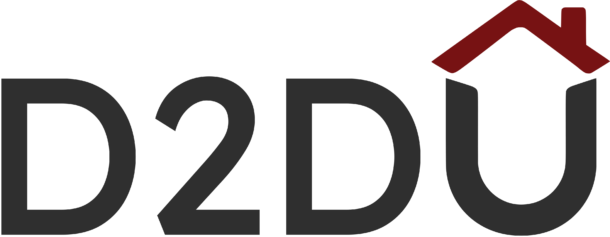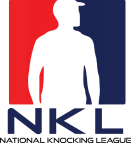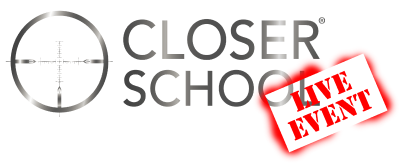Machine Learning in Sales Forecasting represents one of the most groundbreaking approaches in recent times.
It’s the second biggest use case of machine learning.
As experts in door-to-door sales at D2D Experts, we’re always looking for innovative methods to enhance our sales strategies and forecasting accuracy. Integrating machine learning into our processes represents a significant leap forward in this quest.
But what does this mean for sales representatives on the ground? How can this high-tech approach be distilled into practical, everyday strategies?
Firstly, let’s demystify machine learning in the context of sales forecasting. At its core, ML uses historical data patterns to predict future outcomes. In sales, this translates to a more informed understanding of customer behaviors, market trends, and potential sales volumes. By harnessing this data-driven insight, sales reps can anticipate customer needs more accurately and tailor their approaches to maximize effectiveness.
For door to door sales professionals, this can be a game-changer. Imagine being equipped with a predictive tool that informs you of the best times to visit specific neighborhoods or which products might appeal most to a particular demographic. Machine learning algorithms can analyze vast amounts of data – including past interactions, purchase history, and external factors like economic indicators or weather patterns – to provide these insights.
Let’s discuss how sales reps can utilize this technology practically and understandably.
What Is Machine Learning?
Machine Learning is a subset of artificial intelligence that involves training algorithms to improve accuracy and learning capabilities. These algorithms can autonomously recognize errors in previously processed data and improve without human intervention. Feeding these algorithms with high-quality data teaches them to make more accurate predictions in complex scenarios.
Applying Machine Learning To Sales Forecasting
Machine learning models can process large volumes of sales data at speeds unattainable by manual methods. This rapid analysis leads to more accurate sales forecasts, allowing sales teams to plan effectively for future sales strategies.
Uncovering Customer Behavior Patterns
ML algorithms are excellent at analyzing extensive data sets, uncovering patterns and insights into customer behavior that might otherwise go unnoticed. These insights can help sales teams identify new leads and tailor their campaigns to predict product or service demand accurately.
Time And Resource Efficiency
One of the significant benefits of using ML in sales forecasting is its ability to save time and resources. It reduces the need for manual data entry and analysis, freeing up sales teams to focus on more strategic and value-adding activities.
Practical Examples Of Machine Learning In Sales Forecasting
Following are the practical examples of machine learning in sales forecasting
1. Gut Feel Forecasting vs. Data-Driven Insights
Traditional gut-feel forecasting, based on intuition, often needs more accuracy. Machine learning, on the other hand, provides data-driven insights, making forecasts more reliable and less dependent on individual experiences.
2. From Almanac to AI-Powered Forecasting
While the Almanac method relies on historical data, it fails to account for sudden market changes. ML models can analyze historical data and current market trends, providing a more holistic and accurate forecast.
3. Enhancing the Funnel Forecasting Method
Funnel forecasting analyzes the sales funnel’s performance, including win rates and cycle lengths. ML can enhance this method by providing deeper insights into the health of the sales pipeline and predicting future sales more accurately.
4. Portfolio Forecasting
This method combines various forecasting strategies, including historical data and qualitative insights. ML can integrate these factors to provide a comprehensive forecast that considers all possible variables affecting sales.
5. Multivariate Regression Analysis
This advanced statistical method analyzes multiple variables and their interrelations. ML can significantly refine this analysis by identifying complex patterns and relationships within the sales data
6. Refining Predictions with Machine Learning
Machine Learning can be modeled to reflect traditional forecasting methods, refining them with real-time data analysis. Sales teams can contribute to these models by feeding both quantitative and qualitative data, enhancing the accuracy of predictions over time.
Key Benefits Of Using Machine Learning For Sales Forecasting
Using machine learning for sales forecasting can bring many benefits to your business, such as:
Increased accuracy and reliability: Machine learning can reduce the errors and biases often affecting human-made forecasts and provide more precise and consistent results. It can also handle large, complex data sets and account for multiple factors and scenarios.
Improved efficiency and productivity: Machine learning can automate and streamline the sales forecasting process and save you time and resources. It can also provide real-time and dynamic forecasts and update them as new data becomes available.
Enhanced decision-making and strategy: Machine learning can provide valuable insights and recommendations for sales forecasting and planning. It can also help you optimize your sales performance and resources and align your sales goals with your business objectives.
At D2D University, we offer comprehensive training modules covering sales forecasting basics. Our meticulously crafted courses, led by industry experts, offer advanced sales training to empower you to perform data-driven decision-making in today’s competitive sales environment.
How to Get Started With Machine Learning for Sales Forecasting
Implementing machine learning for sales forecasting involves several steps, from defining the problem to deploying and monitoring the model. Here’s a practical guide, including tools and software commonly used in each step:
1. Define Your Business Problem and Goal
Tools/Software: Use project management tools like Trello or Asana to outline goals and track progress.
Source: Trello (trello.com), Asana (asana.com)
2. Collect and Prepare Your Data
Data Collection: Use CRM systems like Salesforce or HubSpot to gather sales data.
Data Preparation: Tools like Python (pandas library) or R are excellent for data cleaning and preprocessing.
Source for CRM: Salesforce (salesforce.com), HubSpot (hubspot.com)
Source for Data Prep Tools: Python (python.org), R (r-project.org)
Making Peace With the Vampires: How to Handle Difficult Clients With a Smile
3. Choose and Train Your Machine Learning Model
Model Selection: Based on your data, choose a model. Common models for sales forecasting include linear regression, decision trees, or neural networks.
Training Platform: Utilize machine learning platforms like TensorFlow or scikit-learn for training.
Hyperparameter Tuning: Tools like Keras Tuner or sci-kit-learn’s GridSearchCV can help optimize model parameters.
Source for ML Platforms: TensorFlow (tensorflow.org), scikit-learn (scikit-learn.org)
Source for Hyperparameter Tuning: Keras Tuner (keras.io/keras_tuner), GridSearchCV documentation
4. Deploy and Monitor Your Machine Learning Model
Deployment: Deploy models using AWS SageMaker or Google Cloud AI Platforms.
Monitoring: Use tools like MLflow to monitor model performance.
Source for Deployment: AWS SageMaker (aws.amazon.com/sagemaker), Google Cloud AI Platform (cloud.google.com/ai-platform)
Source for Monitoring: MLflow (mlflow.org)
Additional Resources and Tools
Data Visualization: Tools like Tableau or Power BI for visualizing data and forecasting results.
Automated ML (AutoML): AutoML tools like Google’s AutoML or DataRobot can automate the model selection and training process for those without extensive machine learning expertise.
Source for Data Visualization: Tableau (tableau.com), Power BI (powerbi.microsoft.com)
Source for AutoML: Google AutoML (cloud.google.com/automl), DataRobot (datarobot.com)
Remember, the success of machine learning in sales forecasting depends not just on the technology but also on how well it’s aligned with your business goals and processes.
A digital marketing professional specializing in content-based functional areas - Ahsan Zafeer is driven by a never-ending passion for developing, nurturing, and strategizing key content aspects. He writes extensively on tech, digital marketing, SEO, cybersecurity, and emerging technologies. He is also a digital marketing strategist and freelance consultant for globally oriented organizations.
























